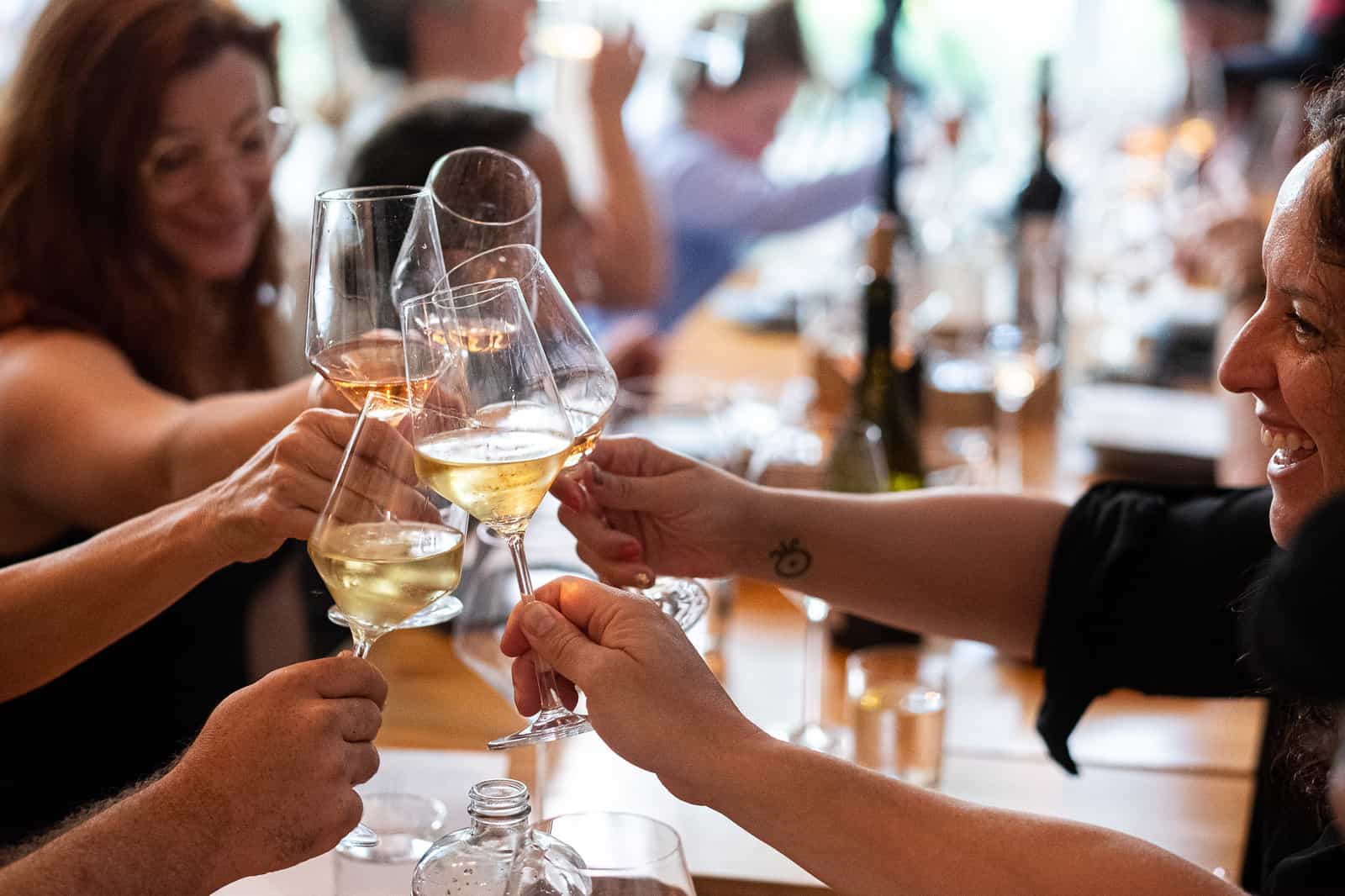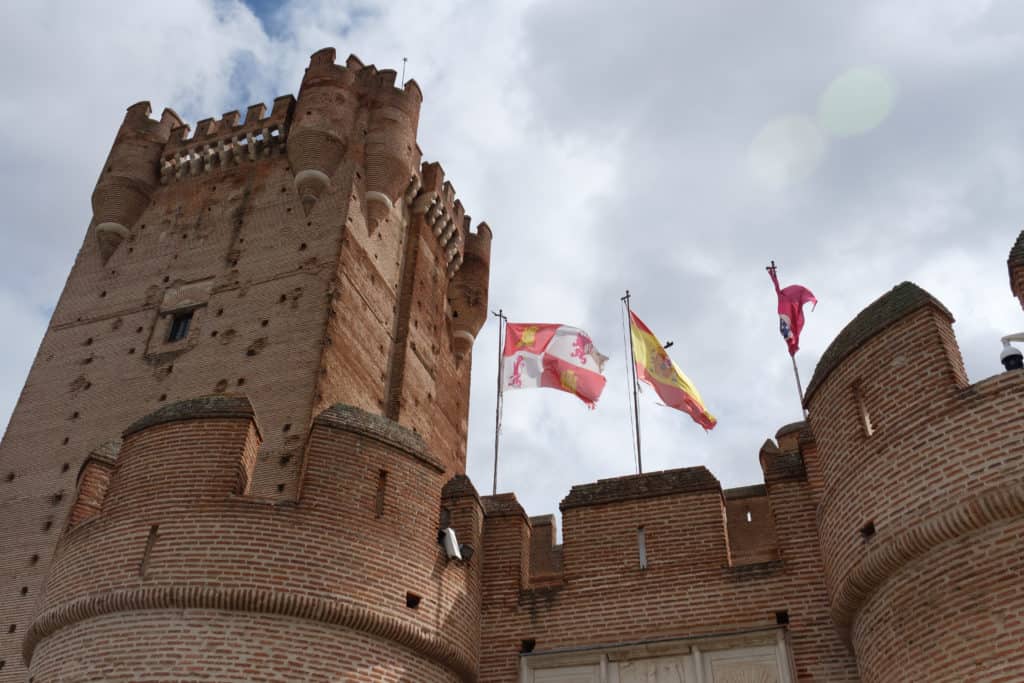
Photography by Galdones Photography
When winemaking began in Rueda around 1,000 years ago, it’s a wonder anyone would have thought to plant grapes in this region of extremes – blisteringly hot summers, bitterly cold winters, and a relatively high altitude. Happily, the local monks and the Verdejo grape, native to North Africa, arrived in the region at about the same time, and in that grape, the monks saw possibility where there wasn’t necessarily promise, and perhaps they were thirsty.
A 100-mile journey on the A-6 north from Madrid, Rueda is a vast expanse of lime-rich alluvial soils and in much of it, stones and pebbles – lots of pebbles. It is part of Castilla y León, Spain’s largest region and Europe’s third. The region is best known as the granary because of the extensive plantings of wheat and other grains – a kind of cereal center. Given this, it seems unlikely to be home to the prestigious wine areas within it, but a river runs through it, and with that, the key to vibrant vineyards and the wines that come from them.
Most of the vineyards are planted south of the Duero River. Because Rueda sits at an altitude of about 800 meters (2400 feet), and because of its location distant from any cooling sea breezes, it is an arid landscape that nevertheless plays host to oases of verdant vineyards throughout.
The prime grape of the region is Verdejo, to which about 40,000 acres of vineyards are dedicated. Because of the pebbly soil, the ground they’re rooted in seems pretty much inhospitable to anything but perhaps a dirt-loving reptile. Fortunately, these grapevines produce tasty grapes when they‘re forced to struggle, and in this fight, wine drinkers emerge the victors.
In fact, the Verdejo that grows on these vines makes sense when you think of the scorching region in which they’ve taken root. For one, there are few pleasures in life better than a glass of Verdejo on a Rueda summer day — light, refreshing, lemony, almondy, citrusy, and mineral-y –all the desirable characteristics of a quintessential summer wine. But this grape was planted long before such hedonistic pleasures were distinguished by the season.
Rather, the quality of the Verdejo grape is largely because of its struggle to grow, not in spite of it. The mineral-rich soils and the age of some of the vines – many at least 40 years old and some much older – speak to an enduring grape even after it was wiped out in the late 19th century by phylloxera. But you can’t keep a good grape down, and Verdejo has been nurtured back from the blight and into our glasses ever since.


A Tourist’s Dream
Visitors to Rueda come for one main reason: the local vino. In fact, if you look up “things to do” in Rueda, what you’ll find are phrases like “vino tourism,” “ruta del vino,” and key words like “bodegas” (wineries) and, of course, “wine.” You’ll even find a local cheese or two that gets a spritz of Verdejo during its aging process. Though you’ll find sauvignon blanc and the lesser- known grape, Viura, in Rueda, Verdejo makes up the lion’s share of the wine. Indeed, Rueda and Verdejo are inextricably linked.
Still, what is wine without food, and in Rueda, sun-drenched patios beckon, exquisite tapas are shared, and just 30 minutes away in the region’s main city of Valladolid – Spain’s original capital city – a majestic cathedral sits poised to welcome visitors and serve as a reminder of the area’s rich history. The city also abounds with museums including, unsurprisingly, a wine museum. But the food and wine are the thing, and together? Thrilling. Given this, it’s no surprise that Verdejo is Spain’s number one-selling white wine. The grape’s many forms of expression – sparkling, clean, crisp, young, aged, oak, unoaked – means it takes what it is given and translates it into the wine the winemaker intends and the wine drinker will love. It also means that a glass of Verdejo will go with pretty much any type of tapa or other food. One thing is for certain: like its animal spirit, this wine stealthily yet sure-footedly makes its way past your palate and into your soul.


The Land of Castles & Lions
The flag of Castilla y León bears images of castles and lions – the coat of arms commissioned by leaders several centuries ago. But the presence of the many castles scattered throughout the region and the symbolic watchful eye of the lion has persisted.
This symbolism does not just represent the name of an expansive region but also a sense of purpose. It explains why Rueda is the place where the first white grape in Spain was bestowed the designation of Denomination of Origin or DO – a sort of government seal of approval mandating that a wine bearing the name Rueda Verdejo may only be made within the designated geographic region. A Verdejo by any other name is just a Verdejo. This prestigious designation became official in 1980, and the rest, as they say, is history.
At its heart, Rueda and its signature grape, Verdejo, is all about agriculture. Grapes are harvested using modern techniques as well as by hand depending on the slope of the vineyards, and all grapes are harvested at night because of the hot temperatures. Winemakers here get to decide the style of Verdejo that best represents their grapes, the terroir, and themselves.
Indeed, with Verdejo you’re not just tasting a wine, you’re tasting an entire region – an expression of climate, of the high altitude at which Verdejo works so hard to grow, a grape and region that even the government recognizes as special, and a place where the monks set the stage a millennia ago to put something great and delicious into the glass today.




